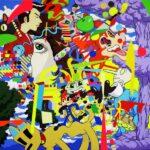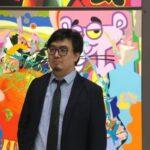< Dongi Lee : Pentagon > Press Release
May 27 - July 17, 2021
A Team
This exhibition is the most significant survey on Lee’s “Eclecticism” among his 6 others series. Best known for his countless overlapped and collided images, Eclecticism reveals the cultural phenomena and the discourse of modern society. With the debut of his gigantic work, Pentagon (2019), this show not only includes the new paintings from the series, but also is accompanied by a forthcoming comprehensive catalogue on Eclecticism.
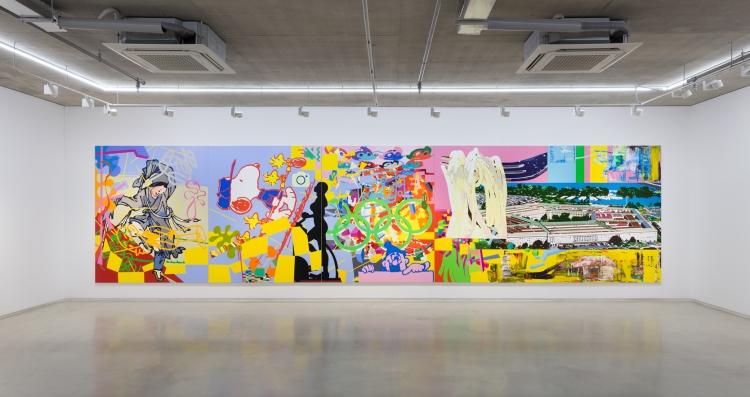
Lee Dongi is the first generation of artists who applied images of cartoons to Korean contemporary art. He began in the early 1990s, a time when the Korean art scene witnessed experimentation of art formats and dramatic changes to the medium environment, with paintings of Atomaus, a character he created in 1993 by combing images of the Japanese Astro Boy and the American Mickey Mouse. Coming into the 2000s when mass media and consumerism was growing at a rapid pace, he continued his artistic path creating original sub-characters such as Mictom, Nero, Doggy Dog, A-Man, Box Robot, and Dr. Froid, etc.
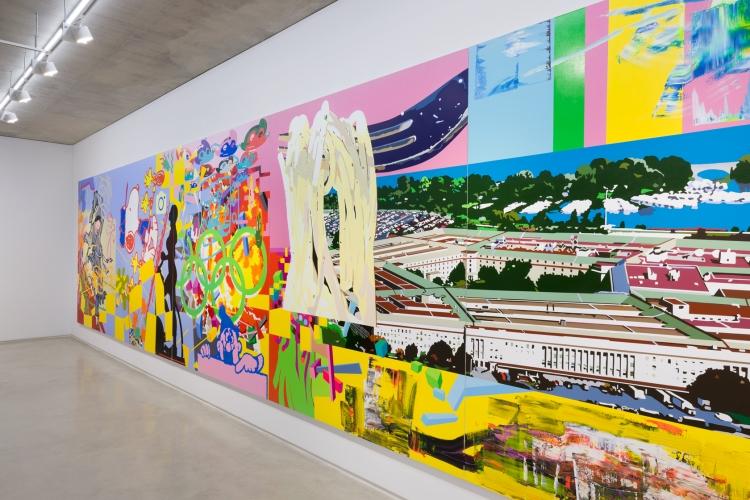
Lee’s works can be viewed under six broad categories: Eclecticism, a mixture of subculture-infused elements – consisting of words and images taken from the internet, newspaper, magazines, etc. – both familiar and strange that suggest diverse double meanings; the character Atomaus, that has become segmented and transformed through an obsessive self-emulation; Double vision, in which an Abstract painting and Atomaus are both expressed on a single canvas divided into two; Abstract painting, filled with expressionism elements; Soap opera, which transfer into drawings captured scenes from Korean dramas aired overseas; and Comics, drawings of a specific zoomed-in part of a comic book page.
Though Lee’s paintings adopt and edit images that visually represent the perceived contemporary world, they do not hold in them a specific narrative, and no relational understanding exists between each of the elements present. The inundation of visual images from the multi-media and digital mediums of today and stimulations from society become layered or juxtaposed meaninglessly with the landscape of everyday life. Among Lee’s works, those that best represent such qualities are the layered paintings in his eclecticism series. “Layered” here is defined as images of different nature being overlapped and accumulated on the same screen, a method that the artist has used to consistently build the series since 2010. Through the combining of mass consumer culture and subculture to give a multi-dimensional interpretation, the eclecticism series uses colliding and overlapping as a way to reveal the cultural phenomena and the cross-section of modern society of today.
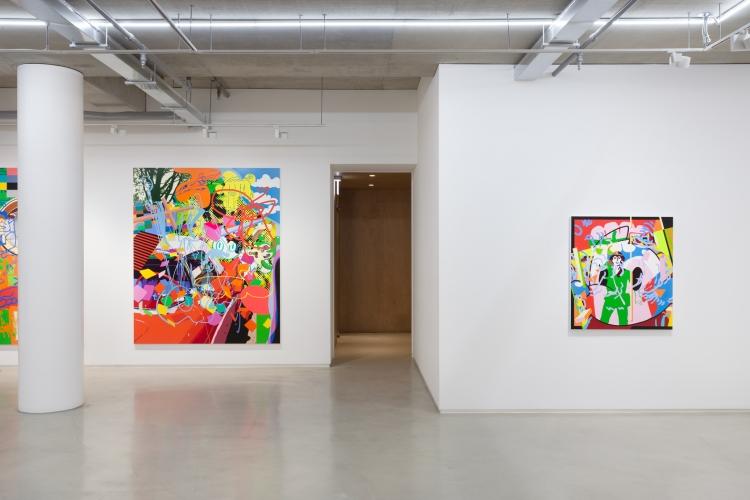
Lee was always specially drawn to readily consumed and widely distributed images within popular culture, and blatantly used such mundane forms of modern society to outwardly show his artwork is based on it. But rather than simply bringing visual images of pop culture into the realm of art indiscriminately, he uses them in his attempts to address the influence and effects popular cultures has on society and contemplate how to interlink the many contact points of arts and visual culture.
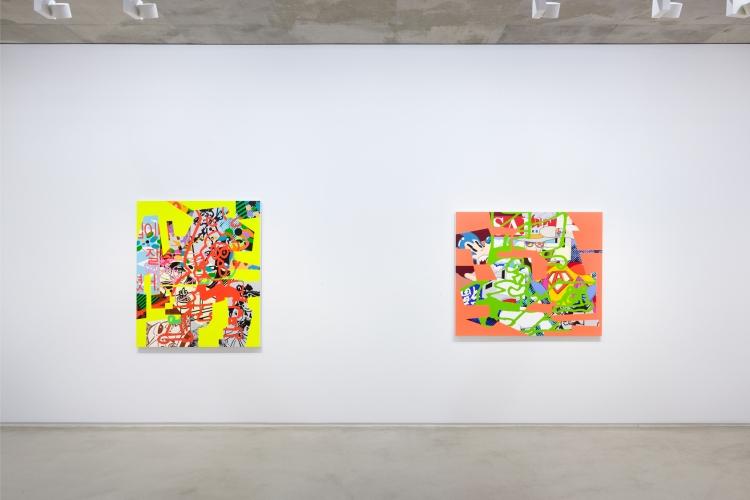
Lee’s first exhibition with PIBI GALLERY in 2018 was centered on eclecticism and abstract paintings, two bodies of work of the artist that were prominent during a certain time period. His second show, Dongi Lee: Back to the Future, was about revisiting his early works that led to the birth of Korean pop art in the early 1990s, a period when the Korean art scene witnessed experimentation of art formats and dramatic changes to the medium environment, going over the attitude and methods that form the basis of his works. Going through his work from in and around 1993 to 2014, the show attempted to look over the Korean contemporary art environment that brought about its version of pop art and gauge the status and role of Korea’s first generation pop artist.
PIBI GALLERY intends a much more in-depth inspection of Lee’s artistic world for his third exhibition PENTAGON, focusing, among his many series, on eclecticism in terms of its importance and many complex layers. The paintings of this series have Lee’s diverse characters and vast amount of collected resource images coming together in unorganized tangles to present a screen that seems severed but humorous at the same time, offering a multi-angle viewpoint that seeks out the past, present, and future. PENTAGON hence will be a meaningful opportunity to observe and understand such characters and their variations with a much more in-depth way than one would have otherwise.
Related Links
